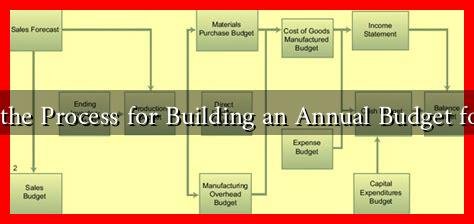-
Table of Contents
- What Is the Process for Building an Annual Budget for 2025?
- Understanding the Importance of Budgeting
- Step-by-Step Process for Building an Annual Budget
- 1. Set Clear Objectives
- 2. Gather Historical Data
- 3. Involve Stakeholders
- 4. Draft the Budget
- 5. Review and Revise
- 6. Final Approval and Implementation
- 7. Monitor and Adjust
- Conclusion
What Is the Process for Building an Annual Budget for 2025?
Creating an annual budget is a critical task for any organization, whether it be a business, a non-profit, or a government entity. The budget serves as a financial roadmap, guiding decision-making and resource allocation for the upcoming year. As we approach 2025, understanding the process of building an effective budget is essential for achieving financial stability and growth. This article outlines the key steps involved in creating an annual budget, along with examples and best practices.
Understanding the Importance of Budgeting
Before diving into the budgeting process, it’s important to recognize why budgeting is crucial. A well-structured budget helps organizations:
- Allocate resources efficiently
- Set financial goals and objectives
- Monitor performance and make adjustments as needed
- Enhance accountability and transparency
According to a survey by the Financial Planning Association, 60% of financial planners believe that having a budget is essential for achieving financial success. This statistic underscores the importance of a well-thought-out budgeting process.
Step-by-Step Process for Building an Annual Budget
The process of building an annual budget typically involves several key steps:
1. Set Clear Objectives
The first step in the budgeting process is to establish clear financial objectives for the upcoming year. These objectives should align with the organization’s overall strategic goals. For example, a company may aim to:
- Increase revenue by 15%
- Reduce operational costs by 10%
- Invest in new technology to improve efficiency
2. Gather Historical Data
Analyzing historical financial data is crucial for making informed decisions. Organizations should review past budgets, actual expenditures, and revenue trends. This data provides insights into spending patterns and helps identify areas for improvement. For instance, if a company consistently overspends in marketing, it may need to adjust its budget allocation for that category.
3. Involve Stakeholders
Engaging key stakeholders in the budgeting process fosters collaboration and ensures that all perspectives are considered. This may include department heads, finance teams, and even external advisors. By involving various stakeholders, organizations can:
- Gain insights into departmental needs
- Encourage buy-in and accountability
- Identify potential risks and opportunities
4. Draft the Budget
Once objectives are set and data is gathered, the next step is to draft the budget. This involves estimating revenues and expenses for each department or project. Organizations can use various budgeting methods, such as:
- Zero-based budgeting: Starting from a “zero base” and justifying all expenses
- Incremental budgeting: Adjusting previous budgets based on new information
- Activity-based budgeting: Focusing on the costs of specific activities
5. Review and Revise
After drafting the budget, it’s essential to review it thoroughly. This may involve multiple iterations and discussions among stakeholders. Organizations should look for discrepancies, ensure alignment with strategic goals, and make necessary adjustments. For example, if projected revenues fall short, expenses may need to be cut or reallocated.
6. Final Approval and Implementation
Once the budget has been refined, it must be approved by the appropriate authority, such as the board of directors or senior management. After approval, the budget is implemented, and teams are informed of their financial allocations.
7. Monitor and Adjust
Budgeting is not a one-time event; it requires ongoing monitoring and adjustments throughout the year. Organizations should regularly compare actual performance against the budget and make necessary changes to stay on track. This may involve reallocating funds or revising forecasts based on changing circumstances.
Conclusion
Building an annual budget for 2025 is a multifaceted process that requires careful planning, collaboration, and ongoing evaluation. By setting clear objectives, gathering historical data, involving stakeholders, and continuously monitoring performance, organizations can create a budget that not only meets their financial goals but also supports their long-term strategic vision. As we move into 2025, embracing a proactive and flexible budgeting approach will be essential for navigating the uncertainties of the economic landscape.
For more insights on effective budgeting strategies, consider visiting the Investopedia Budgeting Guide.




